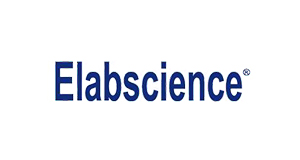Recombinant Human CD59 protein (His tag)
Recombinant Human CD59 protein (His tag)
SKU
ELSPDMH100088-100
Packaging Unit
100 µg
Manufacturer
Elabscience Biotechnology
Availability:
loading...
Price is loading...
Abbreviation: CD59
Target Synonym: 16.3A5;1F5;1F5;EJ16;EJ30;EL32;FLJ38134;FLJ92039;G344;HRF 20;Ly 6
Target Species: Human
Expression Host: HEK293 Cells
Fusion Tag: C-His
UNIProt ID: P13987
Background: CD59 glycoprotein, also known as 20 kDa homologous restriction factor, HRF20, MAC-inhibitory protein, Membrane attack complex inhibition factor, Membrane inhibitor of reactive lysis, MIC11, MIRL and CD59, is a cell membrane protein which contains one UPAR/Ly6 domain. CD59 is a small, highly glycosylated, GPI-linked protein, with a wide expression profile. The soluble form of CD59 from urine retains its specific complement binding activity, but exhibits greatly reduced ability to inhibit MAC assembly on cell membranes. CD59 is a potent inhibitor of the complement membrane attack complex (MAC) action. CD59 was first identified as a regulator of the terminal pathway of complement. It acts by binding to the C8 and/or C9 complements of the assembling MAC, thereby preventing incorporation of the multiple copies of C9 required for complete formation of the osmolytic pore. This inhibitor appears to be species-specific. CD59 is involved in signal transduction for T-cell activation complexed to a protein tyrosine kinase. Defects in CD59 are the cause of CD59 deficiency (CD59D).
Sequence: Met1-Glu101
Purity: > 95 % as determined by reducing SDS-PAGE.
Formulation: Lyophilized from sterile PBS, pH 7.4.
Normally 5 % - 8 % trehalose, mannitol and 0.01% Tween80 are added as protectants before lyophilization.
Please refer to the specific buffer information in the printed manual.
Endotoxin: Please contact us for more information.
Target Synonym: 16.3A5;1F5;1F5;EJ16;EJ30;EL32;FLJ38134;FLJ92039;G344;HRF 20;Ly 6
Target Species: Human
Expression Host: HEK293 Cells
Fusion Tag: C-His
UNIProt ID: P13987
Background: CD59 glycoprotein, also known as 20 kDa homologous restriction factor, HRF20, MAC-inhibitory protein, Membrane attack complex inhibition factor, Membrane inhibitor of reactive lysis, MIC11, MIRL and CD59, is a cell membrane protein which contains one UPAR/Ly6 domain. CD59 is a small, highly glycosylated, GPI-linked protein, with a wide expression profile. The soluble form of CD59 from urine retains its specific complement binding activity, but exhibits greatly reduced ability to inhibit MAC assembly on cell membranes. CD59 is a potent inhibitor of the complement membrane attack complex (MAC) action. CD59 was first identified as a regulator of the terminal pathway of complement. It acts by binding to the C8 and/or C9 complements of the assembling MAC, thereby preventing incorporation of the multiple copies of C9 required for complete formation of the osmolytic pore. This inhibitor appears to be species-specific. CD59 is involved in signal transduction for T-cell activation complexed to a protein tyrosine kinase. Defects in CD59 are the cause of CD59 deficiency (CD59D).
Sequence: Met1-Glu101
Purity: > 95 % as determined by reducing SDS-PAGE.
Formulation: Lyophilized from sterile PBS, pH 7.4.
Normally 5 % - 8 % trehalose, mannitol and 0.01% Tween80 are added as protectants before lyophilization.
Please refer to the specific buffer information in the printed manual.
Endotoxin: Please contact us for more information.

 Deutsch
Deutsch










